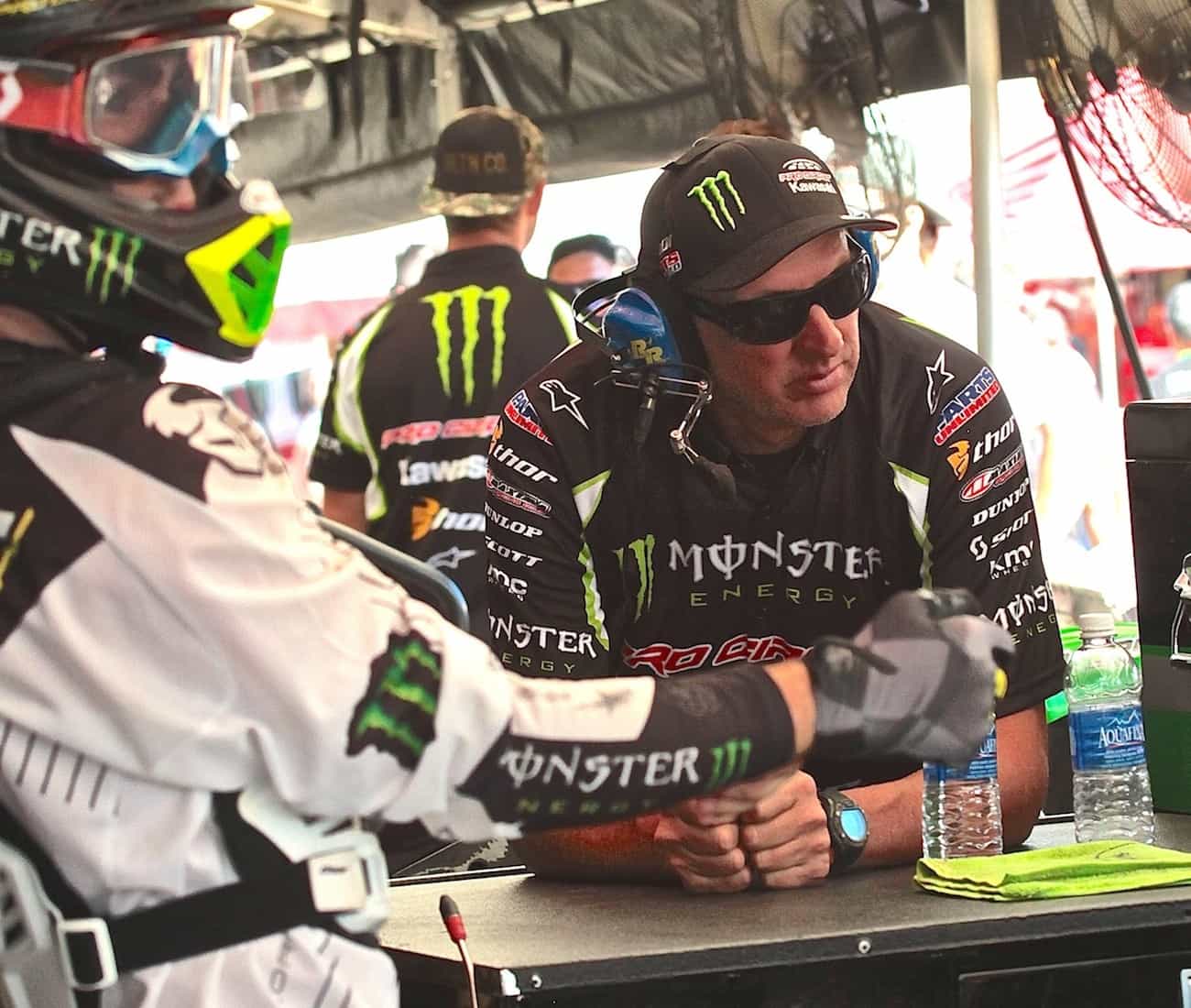BONES BACON ON HOW TO DEAL WITH THE EVILS OF HEAD SHAKE
By Bones Bacon
The term “head shake” describes the sensation a rider feels when his handlebars are swapping back and forth violently enough to make it seem like the bars are going to rip out of his hands. Every motocross racer has had this happen at one time or another—and it’s a little scary. It is one of the more common things riders have to deal with. A rider who suffers from bad head shake doesn’t need a lighter helmet or stronger neck muscles to keep his head from shaking. To stop head shake, you need to determine the cause by going through the following check list.
“THEY BELIEVE IN THE THEORY THAT THE TIGHTER THE BARS, THE MORE THEY CAN RELAX THEIR HANDS ON THE GRIPS. THIS IS KNOWN AS THE “POOR MAN’S STEERING DAMPER.”
First, check your steering bearings. How tight are they? How tight do you like them? To find out, put your bike on a stand with the front end in the air. Turn the bars to the left (halfway to the triple-clamp stop) and let go of them. If the bars fall on their own and it hits the stop enough to bounce back, your steering bearings are way too loose. Your bars should require a little push for them to fall to the stop—and they should just hit it and not bounce back. That is the loosest you should ever keep them. It is true that some riders like their steering head bearings extremely tight. They believe in the theory that the tighter the bars, the more they can relax their hands on the grips. This is known as the “poor man’s steering damper.” Many riders, however, can’t get used to the super-tight feel and prefer to keep it at the looser limit. One quick hint: when tightening the steering head bearings, loosen the bottom triple-clamp bolts instead of the top ones. This will keep your fork height the same, and the bottom clamp will pull up as you are tightening the spanner nut, giving you the same results.
Second, if steering head bearings aren’t the cause of your head shake, then you need to look at how balanced your suspension setup is. Unbalanced suspension can induce head shake. The next question to ask yourself is, do I experience head shake when accelerating or when braking? When you are on the gas, the front end is light. If the forks are too stiff or the rebound is too slow, the front wheel won’t be able to follow the ground. In this case, the wheel will skip off the bumps and then start dancing around.
Third, if the front forks aren’t the problem, then the rear suspension could be too low or too soft, and the chassis might sink down too much, making the front light and nervous. The symptom is most obvious when turning through bumps. The solution is to raise the rear of the bike by changing the race sag.
Fourth, if you are off the gas and on the brakes when head shake occurs, then your front forks are diving into the stroke too far. When this happens, the pressure inside your forks ramps up quickly, hitting the hard spot in the fork’s damping curve. The combination of a steep head angle (caused by the dive) and stiff mid-stroke valving will start the front end dancing.
It is true that the cause of head shake can be suspension that is too stiff, suspension that is too soft, a chassis setup that is too high in the front, a chassis setup that is too low in the front, a chassis setup that is too low in the rear or a chassis setup that is too high in the rear. Don’t panic. Think through your symptoms and make the proper adjustments. This should lead to an easy fix and a more relaxed ride.





Comments are closed.